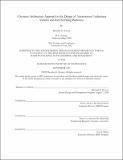| dc.contributor.author | Horton, Brendan K.
(Brendan Kelly) | en_US |
| dc.contributor.other | Massachusetts Institute of Technology. Engineering and Management Program. | en_US |
| dc.contributor.other | System Design and Management Program. | en_US |
| dc.date.accessioned | 2021-10-08T16:48:45Z | |
| dc.date.available | 2021-10-08T16:48:45Z | |
| dc.date.copyright | 2020 | en_US |
| dc.date.issued | 2020 | en_US |
| dc.identifier.uri | https://hdl.handle.net/1721.1/132826 | |
| dc.description | Thesis: S.M. in Engineering and Management, Massachusetts Institute of Technology, System Design and Management Program, September, 2020 | en_US |
| dc.description | Cataloged from the official version of thesis. | en_US |
| dc.description | Includes bibliographical references (pages 177-184). | en_US |
| dc.description.abstract | Autonomous underwater vehicles hold great potential in the realms of industry, military, scientific, and personal usage. The applications of intelligently applied autonomous functionality could improve work performed on subsea infrastructure, commercial shipping lane maintenance, canal and channel observation, search and rescue, military applications, as well as general scientific research. Given such potential, and supposing that existing technological barriers to progress could be overcome, what could a potential system architecture of future autonomous underwater vehicles look like? Fundamentally this thesis asks: "could novel architectures of AUV systems - specifically pairing AUVs to remote service platforms - lead to significant performance increases?" In approaching this subject, a specific case study is leveraged where autonomous underwater vehicles were extensively used: the search for Malaysian Air flight 370. This specific mission profile has been extensively documented by others laying a comprehensive framework. It represents the single largest search and rescue operation ever performed. Within this thesis, whole-system performance metrics of this search and rescue operation are compared against calculated performance metrics of systematically generated possible architectures. In decomposing the system into its functional elements, a deterministic evaluation is executed followed by a probabilistic examination of the system as modeled. The results of the probabilistic model are also interpreted via a Pareto ranking methodology where Pareto surfaces are identified in multidimensional tradespaces. These component cases which comprise the Pareto surface are subsequently removed from the dataset, and the process is run again. This iterative approach demonstrated that the top ten performing architectures were comprised entirely out of architectures with either one or four AUVs. The outputs of these models are subsequently compared against the baseline system used in the search for MH370. Following the analysis, a major fault was identified in the foundations of all of the models surrounding a figure of merit wherein the time to the seafloor was calculated for all architectures. All of the top ten performing design vectors - systems which contained one or four AUVs - were unchanged due to this error. Architectures which were affected by this error -- systems with more than four AUVs -- were impacted negatively. Several methods of re-imagining the error are presented herein as complexities that are inherent in the system, which are not handled by these models. These new emergent complexities were present in the system prior to the model construction, but unaccounted for. Discovery of this faulty assumption laid bare several architectural decisions which are unexplored in this thesis, but could provide the foundation for future work in this space. The outcome of these modeling efforts suggests that pairing an autonomous underwater vehicle with an autonomous service platform can result in increases in all performance metrics. Specific metrics which are improved include daily search area rate, calendar mission completion time, and total project cost. This improvement is specifically calibrated to the case study of MH370, but the performance metrics themselves are not exclusively applicable to search and rescue operations. This model indicates that such a system could accomplish the same mission in less time for half the cost. This thesis presents a vision of future autonomous underwater vehicle systems in which daily operational time, search area rates, calendar mission completion times, and total system costs can all be improved relative to the existing standards. Such improvements are equally applicable to commercial, industrial, military, civilian, and scientific endeavors in which autonomous underwater vehicles could be a potential tool. | en_US |
| dc.description.statementofresponsibility | by Brendan K. Horton. | en_US |
| dc.format.extent | 200 pages | en_US |
| dc.language.iso | eng | en_US |
| dc.publisher | Massachusetts Institute of Technology | en_US |
| dc.rights | MIT theses may be protected by copyright. Please reuse MIT thesis content according to the MIT Libraries Permissions Policy, which is available through the URL provided. | en_US |
| dc.rights.uri | http://dspace.mit.edu/handle/1721.1/7582 | en_US |
| dc.subject | Engineering and Management Program. | en_US |
| dc.subject | System Design and Management Program. | en_US |
| dc.title | A systems architecture approach to the design of autonomous underwater vehicles and their servicing platforms | en_US |
| dc.type | Thesis | en_US |
| dc.description.degree | S.M. in Engineering and Management | en_US |
| dc.contributor.department | Massachusetts Institute of Technology. Engineering and Management Program | en_US |
| dc.identifier.oclc | 1262992441 | en_US |
| dc.description.collection | S.M.inEngineeringandManagement Massachusetts Institute of Technology, System Design and Management Program | en_US |
| dspace.imported | 2021-10-08T16:48:45Z | en_US |
| mit.thesis.degree | Master | en_US |
| mit.thesis.department | SysDes | en_US |
